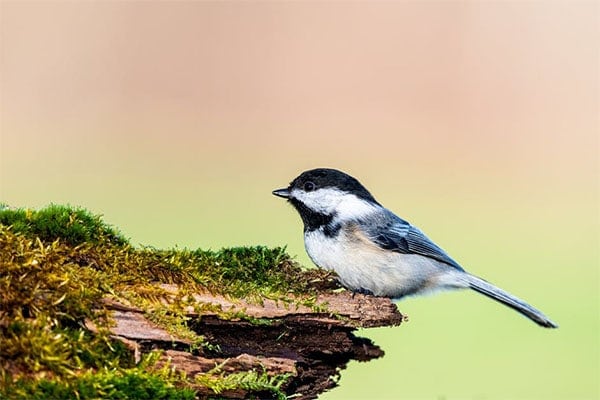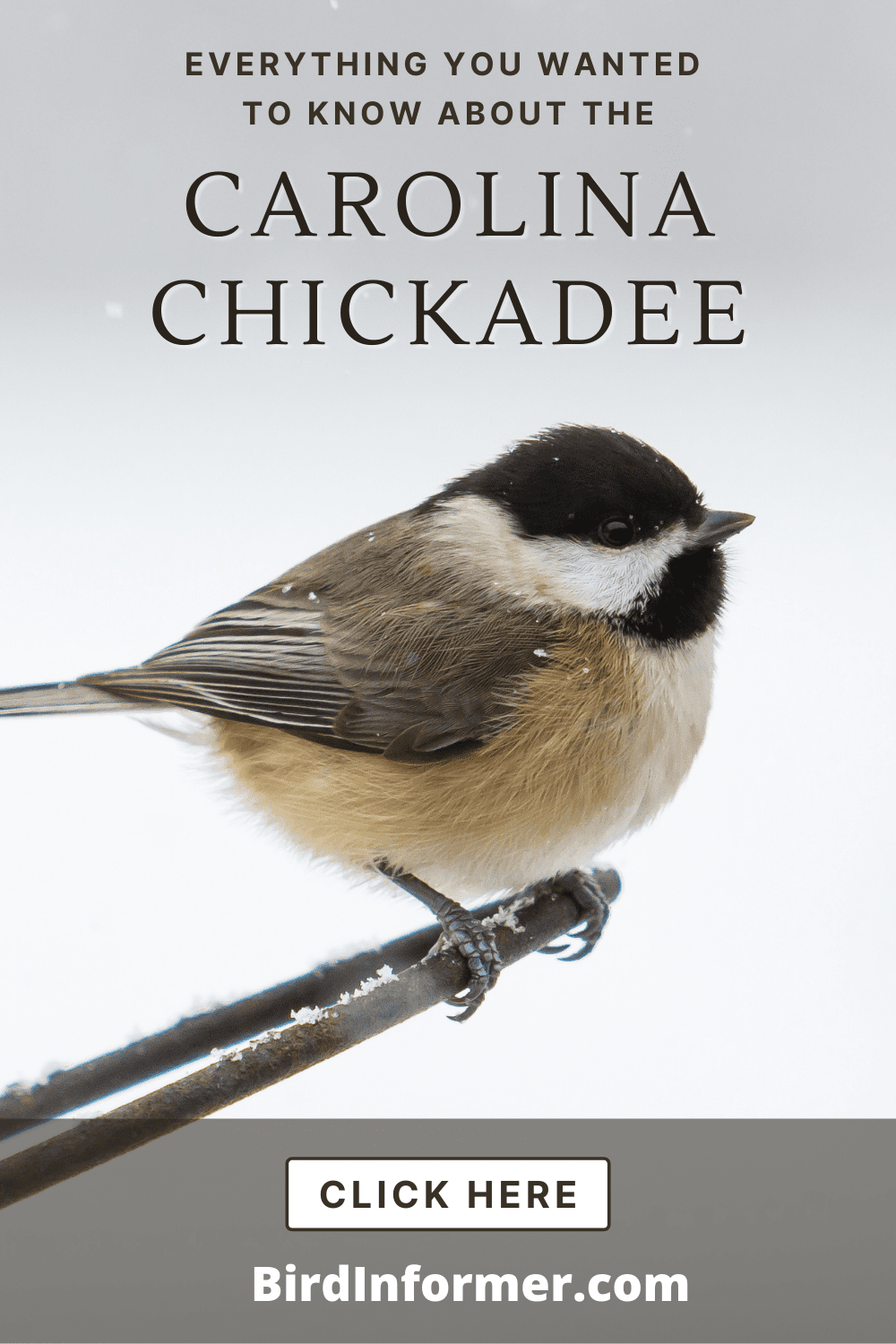Contents
- Carolina chickadee facts
- Carolina chickadee: how-to identify
- Carolina chickadee bird vocalization
- Where You’ll See Carolina Chickadees
- Carolina chickadee diet
- Carolina chickadee nesting
- Carolina chickadee behavior
- How-to attract carolina chickadees
- Carolina chickadee threats
- Carolina chickadee fun & interesting facts
- Carolina chickadee related species in this family
The Carolina Chickadee is a beautiful songbird known for its clean, gray appearance. These birds are known to be the smallest chickadee in North America. They are greatly found in the southeastern part of the US all year-round. These birds look very similar to Black-capped Chickadees, that hybridization often occurs between the two birds.
In this article, we are going to cover a wide variety of topics related to the Carolina Chickadee, such as:
- How to identify them
- How, when, and where they migrate
- Their diet
- How and where they nest
- And much more…
So, without any more delay…
Let’s jump right into it and learn more about the Carolina Chickadee.
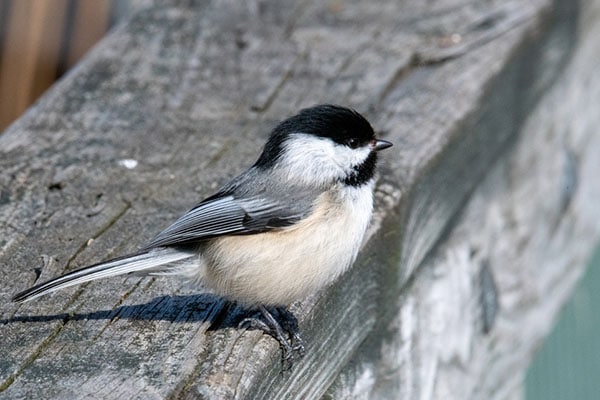
Carolina chickadee facts
- Common Name: Carolina Chickadee
- Scientific Name: Poecile carolinensis
- Scientific Family: Paridae
- Life Span: 11 years
- Size: 3.9 to 4.7 inches
- Wingspan: 5.9 to 7.9 inches
- Weight: 0.3 to 0.4 oz
- Conservation status: Least Concern
Carolina chickadee: how-to identify
Carolina Chickadees are small-sized birds that are only about 4.25 inches in length. They feature a short neck, large head, round body, short bill, and a long and narrow tail.
These birds have a black, gray, and white color combination that is very clean to look at. Their head and throat areas are black, and their faces are white. They have a grayish upper body, and their underparts look lighter.
If you look at the birds from the back, you’ll notice the white edges on their wings. Their side also appears to be a reddish-brown color.
Based on the description, these birds look very similar to the Black-capped Chickadee. They look so much alike that they, themselves, can’t even tell their own species apart. Because of this, hybrids have been formed.
You can tell a Black-capped Chickadee from the Carolina Chickadee from their size and colors. Black-capped Chickadees appear to be bigger, and their colors show more contrasts overall than the Carolina Chickadee.
Differences Between Male & Female
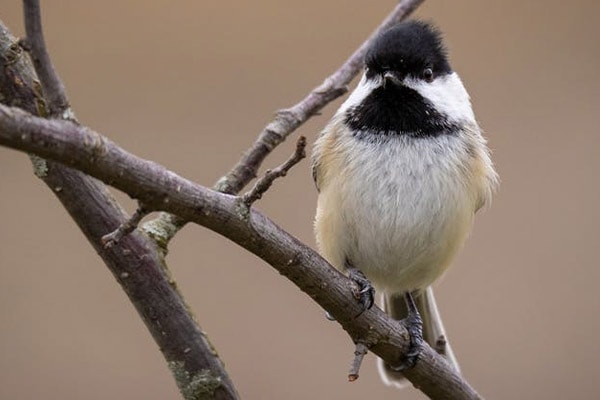
Male and female Carolina Chickadees don’t show any significant difference between each other. But, it has been noted that females are a little bit smaller than males.
Differences In Summer Plumage vs Winter Plumage
Carolina Chickadees look the same all year round, regardless of whether it’s the summer or winter season.
Carolina chickadee bird vocalization
Where You’ll See Carolina Chickadees
Carolina Chickadees are found in the southeastern part of the United States. Their populations range from the eastern half of Texas, Arkansas, and Louisiana, all parts of Mississippi, Georgia, Alabama, and South Carolina, to the northern parts of Florida, North Carolina, and Tennessee.
These birds are commonly found in open deciduous forests, mixed woodlands, forest clearings, forest edges, and suburban and urban parks. They are not fond of visiting backyard feeders and would usually build their nests in low elevations.
Carolina chickadee bird migration
These birds are non-migratory and stay within their southeastern range all year round.
Carolina chickadee diet
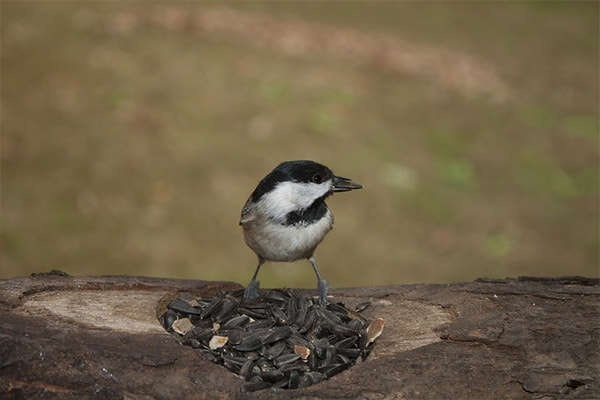
Carolina Chickadees are omnivores. They eat both plant and animal material, which includes insects, seeds, and berries. The birds’ diet mainly depends on the season.
For example, during the winter season, these birds would eat more plant or vegetable materials because that’s more abundant. During the warmer season, however, these birds would eat primarily insects.
It is even said that about 80-90% of Carolina Chickadees’ diet throughout the year is composed of insects. This includes bugs, beetles, and spiders.
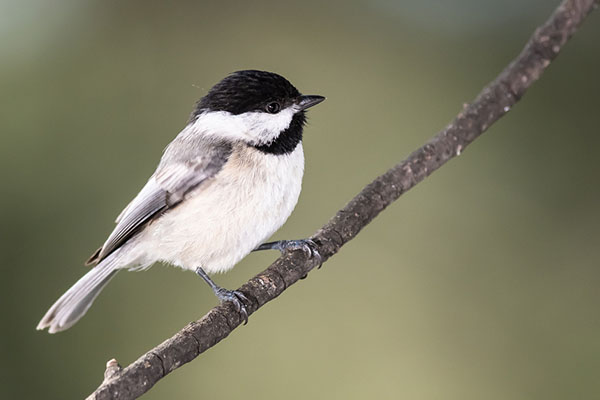
Carolina chickadee nesting
- Clutch Size: 3-10 eggs
- # of Broods: 1 brood
- Incubation Period: 12-15 days
- Nestling Period: 16-19 days
- Egg Description: White with reddish-brown dots
Carolina Chickadees are known as monogamous birds; however, pairs only tend to last one season unless couples survive winter together.
These birds often nest in cavities of trees, about 2-25 feet above the ground. If they can’t find empty cavities, they will look for a dead tree and excavate. Sometimes, excavating or constructing nests on several nest sites until they find the best.
Both the male and female excavate an area for their nest. However, it’s only the female that does the nest construction. She uses some moss and bark strips as the nest’s foundation, and she’ll then line it with softer materials like animal hair, plant matter, and sometimes, a downy’s feather.
Carolina chickadee behavior
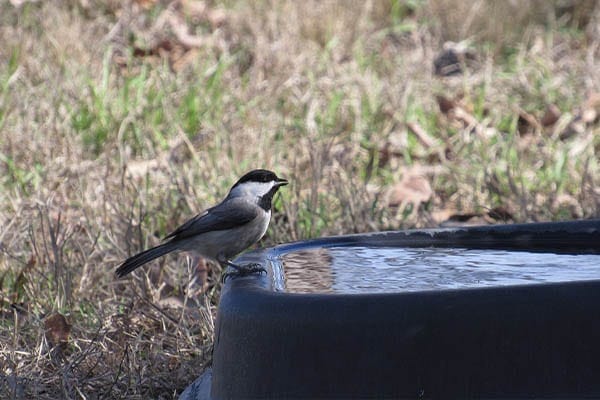
Carolina Chickadees form flocks in winter. It has also been observed that there’s a dominance hierarchy system within them.
It appears that male birds are dominant over females, and larger males are dominant over smaller males. But, no aggressiveness or competition has been seen around them when it comes to searching for food.
However, once the mating season comes, the flock would separate. Male birds would tend to fight, and subordinates would leave the local breeding area to find their own territory. Because of this, some subordinate birds end up not mating for that season.
During winter, Carolina Chickadees have also learned to conserve their energy by being in the state of hypothermia for fifteen hours the most. They have also been seen with other bird species like Tufted Titmice, Black-capped Chickadees, Nuthatches, and Downy and Hairy Woodpeckers.
How-to attract carolina chickadees
Carolina Chickadees may not be frequent visitors of feeders, but that doesn’t mean they’re hard to attract. If you have the right food and shelter requirements, these birds will come.
You can hang some feeders filled with sunflower seeds and peanut chips for these birds. A platform feeder would be perfect for these birds. Another great option is to hang a suet feeder to attract them.
Next, try to provide a nesting site or some shelter. Since these birds love open areas, planting some shrubs and small trees would be perfect. You can then place some nest boxes to serve as their nesting area.
Lastly, try to provide a birdbath as the birds’ water source.
Carolina chickadee threats
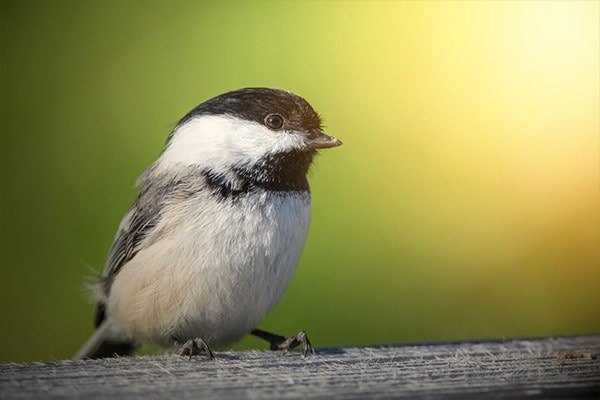
Carolina Chickadees belong to the “least concern” group in terms of conservation status. Their population appears to increase in some local areas where there are many bird feeders. In contrast, the birds’ populations decrease in local areas where many forest clearings and dead tree removal are done.
Predation is also found to be another possible threat to the birds’ population, especially to their eggs and young. Some common predators are hawks, wrens, raccoons, opossums, cats, squirrels, and snakes.
Carolina chickadee fun & interesting facts
- Carolina Chickadees are the smallest chickadee in North America.
- These birds often breed with Black-capped Chickadees in areas where they meet, forming hybrids.
- They often take the food they get from the bird feeders to a nearby branch, and that’s where they eat it.
- They survive in winter by lowering their body temperature for up to 15 hours.
- It’s believed that John James Audubon named them.
- The oldest recorded Carolina Chickadee was ten years and 11 months old.
- Black-capped Chickadee
- Mountain Chickadee
- Chestnut-backed Chickadee
- Boreal Chickadee
- Bridled Titmouse
- Oak Titmouse
- Juniper Titmouse
- Tufted Titmouse
- Black-crested Titmouse

